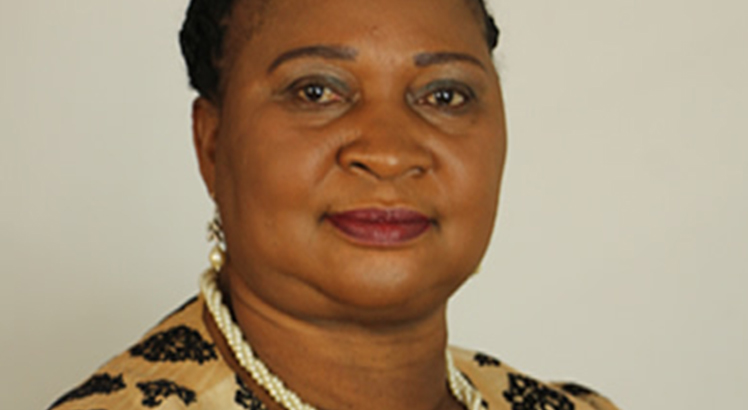NFRA worried about keeping lots of maize
In an exclusive interview on Monday, NFRA chief executive officer Nasinuku Saukila said the challenge the agency is facing is to keep 145 000 metric tonnes in the reserves and maintain the maize quality instead of releasing it to the people that need it.
The reserves had 150 000 metric tons but government recently asked for the release of 5 000 metric tonnes to feed 201 000 vulnerable people in 10 affected districts.
Saukila has since challenged bodies like the Malawi Vulnerability Assessment Committee (MVAC) that make assessment to come up with realistic figures of vulnerable people for free relief maize in the silos.
He said the maize is only meant for vulnerable people who are assessed by a credible body.
Saukila’s remarks come two weeks after Civil Society Agriculture Network (Cisanet) requested NFRA to release some maize from the grain reserves onto the market to stabilise maize prices.
Cisanet national coordinator Tamani Nkhono argued that it is government’s responsibility to ensure there is a lot of maize on the market to lower prices. He also said the maize in the reserves was too little considering the 201 000 people in need of relief maize and the erratic rainfall.
But Saukila said maize in the strategic grain reserves is “too much†and the 201 000 needy people will only take 5 000 metric tonnes from the reserves.
Said Saukila, “While people are saying there is hunger, the professionally established needy quantity is 5 000 metric tonnes. That is the amount the reserve should support. From 2006 to now, there has not been a real challenge to the strategic grain reserves to release maize that could cause us headache. So, the challenge has been to maintain the quality of that grain in the reserves.â€Â
Added Saukila, “What worries me as a manager is that I am not removing stocks from the stores. It is less exciting. I do not get too busy. As a storekeeper I want to be visited by customers. I am not praying for disasters anyway but unfortunately I get busy when there are disasters. Unfortunately MVAC is not throwing a lot of people in the pan. I have maize which cannot be moved since 2006.â€Â
Figures at the NFRA show that the Kanengo silos complex have 130 129.102 metric tonnes; Kazomba depot in Mzimba has 2 138. 679 metric tonnes; Mangochi silos complex 2 759. 459 metric tonnes; Mzuzu silos complex 9 044. 953 metric tonnes; Luchenza silos complex has 739 003 metric tonnes and Limbe transit shed 3 691. 223 metric tonnes.
According to Famine Early Warning Systems Network (Fewsnet) Malawi Food Security Update, from November 2011 through to March 2012, there are 201 000 vulnerable people in need of relief food. The people will need 4 824 metric tonnes. Government already requested NFRA to release this maize and Saukila said it is already being loaded from the Limbe Depot to the affected districts.
Asked why NFRA does not release maize to stabilise the high prices, Saukila said, “That is not our work. We only have to respond to the needy group only and not the group that goes to Admarc. We look after the weaklings.
“Each situation has to be decided by the climate. When I drive around, I see maize. The situation does not really reflect that we should come in. The private sector has to come in. From our point, if the need is heightened, government has enough stock to satisfy that heightened need.â€Â
He said where maize is released; the impact is felt in the affected area because prices go down since the vendors face competition.
He said since 2006 the agency only released 30 000 metric tonnes last year for commercial purposes to provide for room in the reserves. Some of the maize was sold locally while the other to countries like Kenya, Cameroon, Zimbabwe and South Korea.
Asked why NFRA does not release maize again this year for commercial purposes, Saukila said the country has a lot of maize on the market and the situation does not require the intervention of the strategic reserve agency.
Saukila said NFRA did not provide maize to South Sudan as reported in the press. He said it could be from the private traders, government or donor agencies.
Asked about the famous Zimbabwe maize sale, he said his department only coordinated the sale of the 306 000 metric tonnes because at that time the NFRA had no stocks. He said the local transaction which NFRA coordinated went on well. But whether Zimbabwe paid or not, he said, the central bank was in a better position to explain.
Secretary for Disaster Preparedness Jeffrey Kanyinji said on Tuesday that officers are again on the ground making another assessment of vulnerable people to access the relief food.
“We get reports from MVAC. They made the first assessment. They went round again between August and September 2011 for new figures. We will see how many more people will be eligible to access the relief maize. The figures will obviously be high,†said Kanyinji, adding that his department was aware that NFRA has a lot of maize.
NFRA was established by an Act of Parliament in 1999 to manage the national strategic grain reserves to help reduce the impact of failure of the private sector to respond to market signals and make adequate provisions to satisfy national requirements of maize.
There have been calls from the public for government to release maize onto the market to stabilise the high prices. A 50kg bag of maize has gone as high as K5 000 ($30) in some places like Mpingu Trading Centre in Lilongwe. In Nsanje the same bag is at K4 000 ($23).





